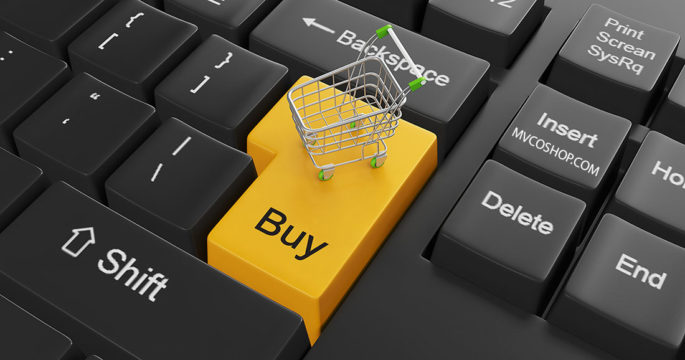Technologies and consumer habits go hand in hand. The more the technologies become faster and advanced, the more customer behaviour becomes dynamic and sophisticated. Globally, brick-and-mortar retail store consumers are spoiled with accessibility and frictionless online shopping experiences. Interestingly, a considerable proportion of consumers still want to continue to go to physical stores now and then.
But here is the Catch 22! Consumers going to physical stores demand swift transactions based on evolving technology. To give customers the joy and convenience they desire, store owners are exploring smart retail technology, including AI, VR, IoT, robotics, and other recent developments. They must also experiment with surprising customers with even more exciting innovations.
What defines smart retail?
Smart retail stores are the next generation of shopping destinations that deepen customer and retailer engagement to increase in-store shopping effectiveness. Smart shops offer conventional physical experiences supported by cutting-edge digital experiences, transforming traditional ideas and objects into intelligent ones. Examples include smart self-checkout systems, smart inventory management, smart carts, and even smart shelves and mirrors. This hybrid type of purchasing is known as Phygital (physical and digital). These smart stores not only assist customers in rational decision-making but also allow them to enjoy their shopping experiences.
Indian retail landscape
More than 13 million Kirana stores exist in India. Fast forward to today, the majority of Indian households began to depend on internet shopping, even for basic groceries, up until the pandemic. The pandemic revealed their importance, relevance and relentlessness to society. Nearly all e-commerce players battled with numerous local obstacles that caused services to be delayed when India went into lockdown overnight. At that time, Kirana stores moved up to close this supply and demand gap by significantly outpacing the big e-commerce companies in local delivery of necessities.
To give customers the joy and convenience they desire, store owners are exploring smart retail technology, including AI, VR, IoT, robotics, and other recent developments
This re-instilled confidence amongst retailers and consumers, with retailers, aggressively adopting the latest technology to provide a smooth sailing shopping experience, if not surpassing but at least standing at an equal footing with online ecommerce.
Smart stores environment
Given the rapid pace of technological advancement, there is not one but many ways in which any store can convert itself into a smart store. Let’s understand some of these in detail:
Voice-assisted sound-zone: On the back of voice technology, a customer simply walks into a sound zone-enabled store and opens their phone to connect with the store through an app. They can speak directly to their phones to check the product’s availability. They can consecutively scan the chosen products on their phone or clicks on the item name on the digital catalogue. The app generates a digital bill of added products with the customer manually making the final payment through a phone or simple voice command from anywhere on the shop floor.
Smart shopping: The customer’s offline buying encounter can be made easier with fully contactless billing and a smart checkout process. A few examples of the services that would be provided are the ability to view a digital bill on a mobile device immediately, one-click checkout to speed up the process, the ability to place digital orders in advance with the option to pick up deliveries in-store, etc.
Audio Bag: Another extremely innovative solution is the Audio Bag. Customers simply need to enter the voice tech-enabled store and pick up the audio bag, connecting it to their respective phones. The customer adds items to the Audio Bag. Once done shopping, the customer drops their Audio Bag at the designated place and receives the item list and payment link on their phones. Finally, they make payment and choose between take-away immediately, self-pick-up later, or home delivery.
A new era in shopping
According to PWC, organised shopping will increase by as much as 30% by 2024 and close to 50% by 2034. Not only voice technology but also smart cameras, IoT devices, artificial intelligence and machine learning, virtual reality and augmented reality, advanced checkout, and other solutions blur the distinction between comfortable online shopping and familiar brick-and-mortar retail, making the routine process of buying everyday items easy, immersive, sustainable, and enjoyable. However, it is expected that voice technology will be leading the way.
Read more: High consumer spend pushes retail ecosystem to digitize faster
The creation of highly specialised interactive shopping experiences with voice-enabled retail has the potential to change what consumers can expect from online shopping completely. In the realm of online commerce, even 1% increase in engagement can result in astronomical increases in sales. Gartner once predicted that adding a voice-powered shopping experience to your e-commerce website would increase revenue by 30%. These changes are happening globally, and their impact is bound to touch Indian stores. And when it does, it will begin a new era in an already digitised economy.

Guest contributor Sudeshna Singh is the Head of Marketing & Communication at ToneTag, a company that harnesses the power of sound to build a robust channel of data communication to enable extraordinary experiences across businesses. Any opinions expressed in this article are strictly that of the author.












